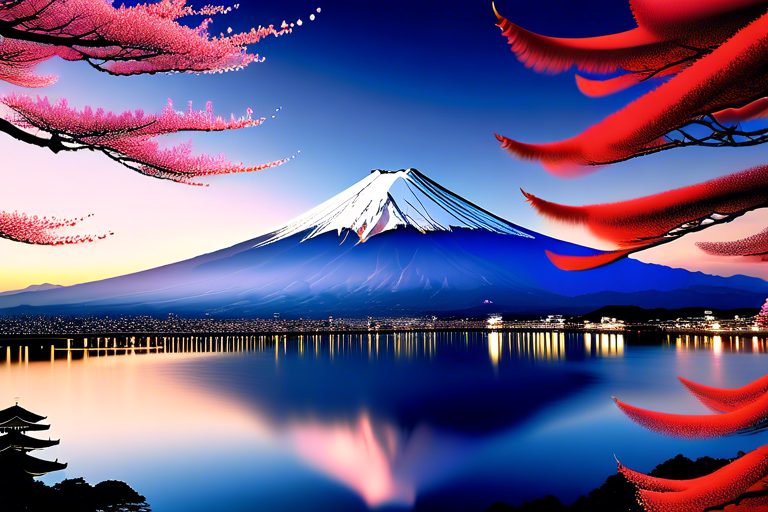Discover the majestic Mount Fuji, a symbol of Japan’s natural beauty and cultural heritage, and delve into its geological features, cultural significance, and the experiences it offers to climbers and tourists.
Introduction to Mount Fuji
Mount Fuji, often referred to as the “Fuji Mountain,” is Japan’s highest peak and a revered symbol of the country’s natural beauty. This stratovolcano stands at
3,776.24 meters
(12,389 feet) and is located on Honshu Island, approximately 100 kilometers southwest of Tokyo. The mountain’s symmetrical cone shape and snow-capped peak have made it a subject of artistic inspiration and admiration for centuries. It is not only a popular destination for mountaineering but also holds a significant place in Japanese art, literature, and religion.
Geological Features of Mount Fuji
Mount Fuji is a stratovolcano, characterized by its steep, conical shape and periodic eruptions. The last eruption occurred in 1707-1
708, and since then, the mountain has been dormant. The geological formation of Mount Fuji is a result of the convergence of the Philippine Sea Plate and the Eurasian Plate, which causes the land to uplift and form the volcanic structure. The mountain is composed mainly of andesite and dacite rocks, which are rich in silica and known for their explosive eruptions. The presence of multiple lava flows and pyroclastic deposits around the base of the mountain is a testament to its volcanic history.
Cultural Significance of Mount Fuji
Mount Fuji is deeply ingrained in Japanese culture and is considered sacred by the Shinto religion. It is often depicted in ukiyo-e woodblock prints, particularly by the famous artist Hokusai in his series “Thirty-six Views of Mount Fuji.” The mountain is also a central theme in many poems and songs, reflecting its importance in Japanese literature. As a pilgrimage site, Mount Fuji has been a destination for spiritual journeys, with many people ascending the mountain to seek purification and enlightenment. The Fujisan Hongu Sengen Taisha, a Shinto shrine at the base of the mountain, is a significant religious site for worshippers.
Climbing and Tourism
Mount Fuji is a popular destination for both domestic and international tourists. The climbing season typically runs from July to August when the weather is most favorable. There are several routes to the summit, each with varying levels of difficulty. The Yoshida Trail is the most popular, while the Gotemba Trail is the longest and most challenging. Climbers must be well-prepared, as the weather can change rapidly, and the climb can be physically demanding. For those who prefer a less strenuous experience, there are also guided tours and transportation options to the fifth station, where visitors can enjoy panoramic views of the surrounding landscape.
In conclusion, Mount Fuji is more than just Japan’s highest peak; it is a cultural and natural icon that has captivated the hearts and minds of people for centuries. Its geological wonders, cultural significance, and the experiences it offers make it a must-visit destination for anyone interested in Japan’s rich heritage and natural beauty.

